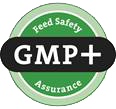- Home
- Organic seeds
- Fodder grasses and legumes
- Timothy
- Timothy TAMMISTO II (EKO) LT-EKO-001
FOR CONSULTATIONS APPLY TO:
Commercial director
Lina Smalskienė
tel. +370 618 02 551
e-mail linak@agrolitpa.lt
Sales manager
Tautvydas Kliučininkas
tel. +370 681 35 093
e-mail tautvydask@agrolitpa.lt
Sales manager
Eglė Petkevičienė
tel. +370 626 95 458
e-mail eglep@agrolitpa.lt
Sales manager
Kotryna Nakrošytė
tel.: +370 601 39 282
e-mail kotryna@agrolitpa.lt
Timothy TAMMISTO II (EKO) LT-EKO-001
Produced in Lithuania
A fairly late, very productive, highly digestible timothy grass with good winter hardiness
- Fairly late variety with excellent stem digestibility
- Very productive and winterhardy
- Good regrowth capability
- High quality of the first cut fodder even in unfavourable harvesting conditions
- Also, the yield of later cuts is of superb feeding quality
- Very good seed productivity capacity
- Winters well
- Due to the good regrowth characteristics of this variety, yields are high
- Yields and quality of the following harvests are good also
- It is also characterized by good seed yields
- Grass digestibility is very good
- During the years of official research, no negative consequences of hibernation were observed
- The plants are very resistant, they are good even in the third and fourth year
- Suitable for intensive use, mowed or grazed at least 3 times a year
- Good resistance to lodging
- Very good disease resistance
- Perfect for sowing in mixtures with alfalfa and early clover
- Because of its good regeneration, it is an excellent component for productive long-term pastures
- Number of days to heading – 46 days (counting from 05.01)
- Injuries after winter – only 4.9 %
- Dry matter yield of the first cut – 5.289 t/ha
- Dry matter content of the first cut – 21.6 %
- Aftermath dry matter after the first cut – 5.072 t//ha
- Total yield of dry matter in the first year of use – 10,361 t//ha
- The aftermath accounted for 49 % of the total dry matter yield in the first year of use
- The amount of fiber (NDF) in the dry matter of the first cut – 649 g/kg
- Protein content in the dry matter of the first cut – 116 g/kg
- Amount of digestible organic matter (D-value) in the dry matter the second cut – 68.4 %
- The amount of fiber (NDF) in the dry matter the second cut – 638 g/kg
- Protein content in the dry matter of the third cut – 101 g/kg
- Amount of digestible organic matter (D-value) in the dry matter of the third cut – 68.1 %
*variety test data in Finland, 2000-2004
- Total annual yield – 10,695 t/ha
- Total annual protein yield – 1,413 t/ha
- Injuries during winter – 3.5 %
- Yield of the 1st year – 12,094 t/ha
- Yield of the 2nd year – 10,096 t/ha
- Yield of the 3rd year – 9.698 t/ha
- Digestibility of the yield of the 1st year (D value, digestible proteins) – 679 g/kg
- Digestibility of the yield of the 2nd year (D value, digestible proteins) – 674 g/kg
- Digestibility of the yield of the 3rd year (D value, digestible proteins) – 723 g/kg
*2010-2017 oat research data in Finland, px.luke.fi
The varietal parameters may differ from those indicated here when the testing circumstances differ from quondam
Recommended sowing rate: 12 kg/ha for pure crop, and 6-10 kg/ha when sowing in mixtures
Keravos sreet. 17, Kerava,
LT-38 131 Panevėžys district, LITHUANIA
Enterprise's code 168598128
VAT code LT685981219
Tel. +370 615 11 315
E. mail info@agrolitpa.lt




.JPG)

